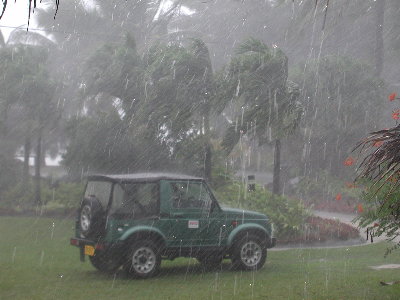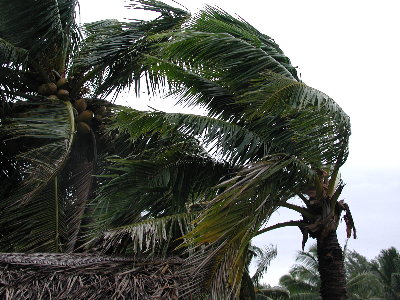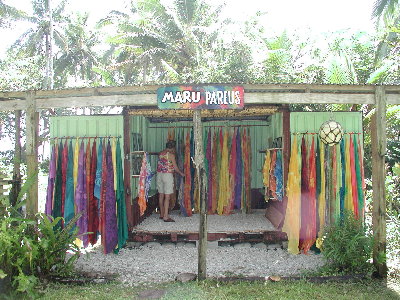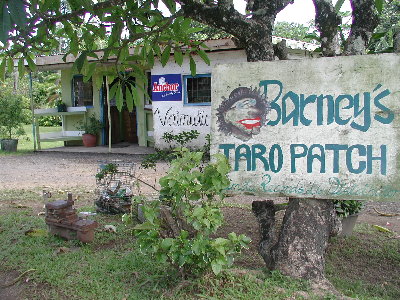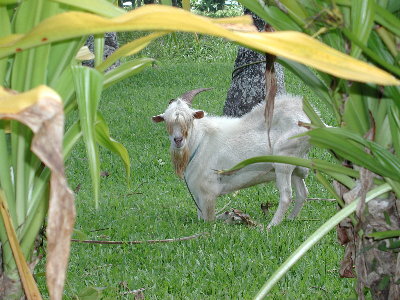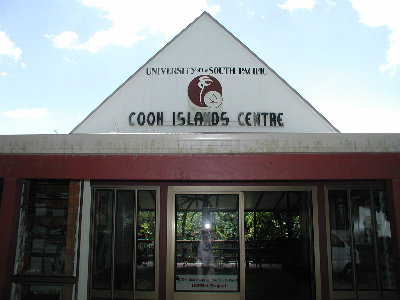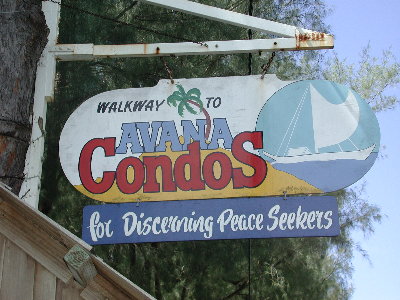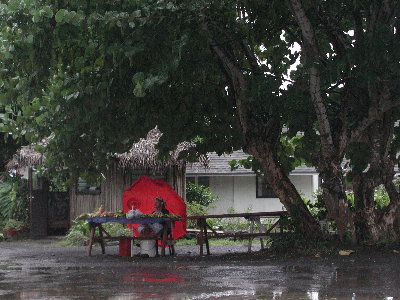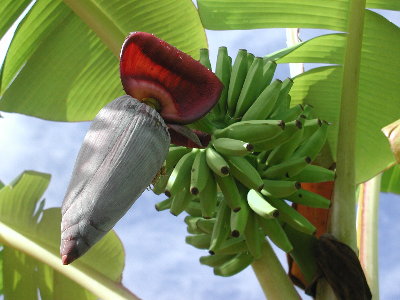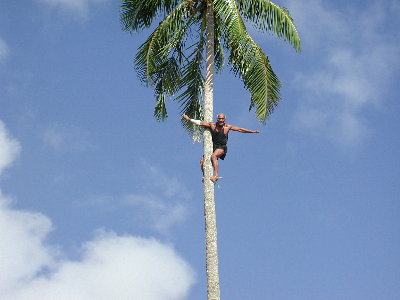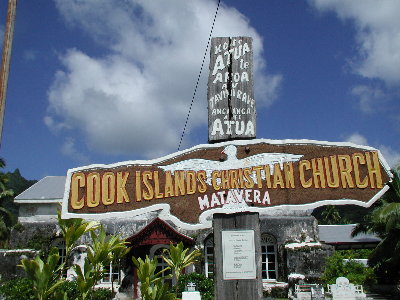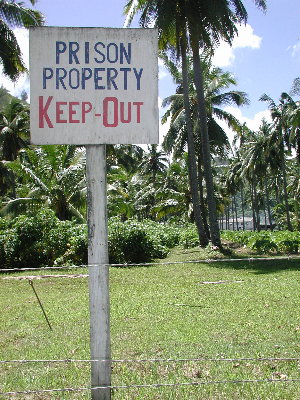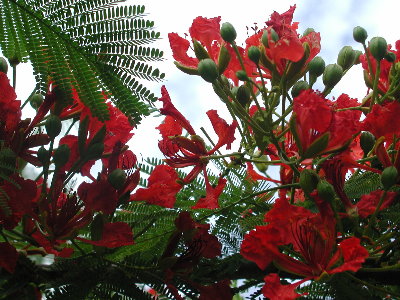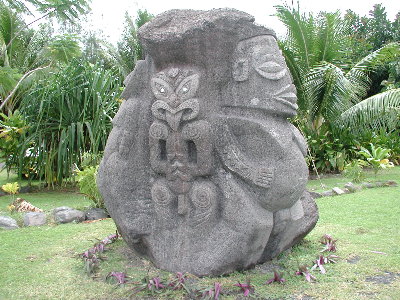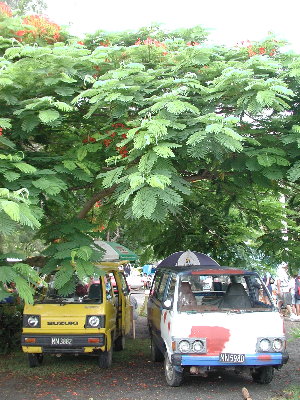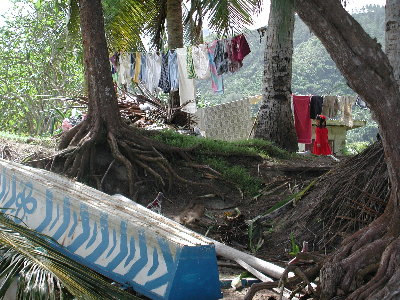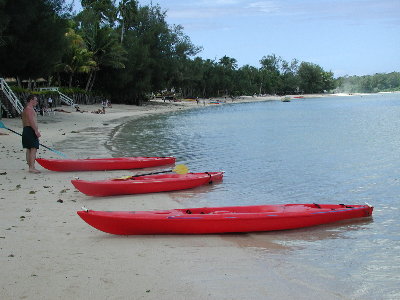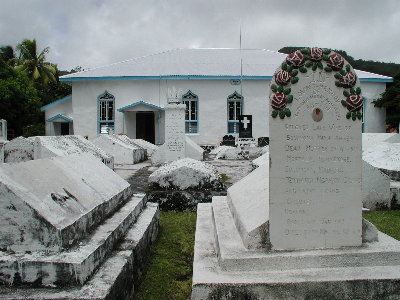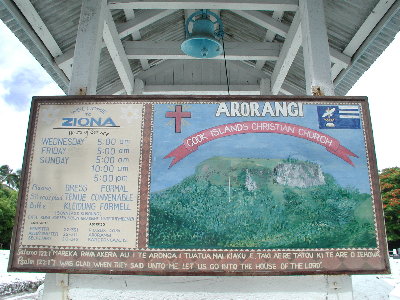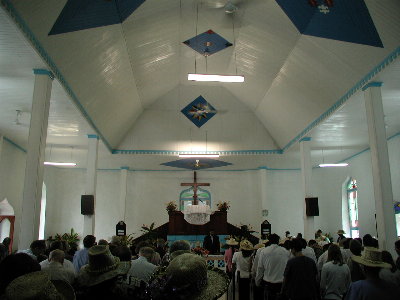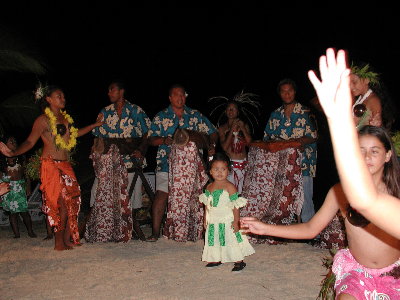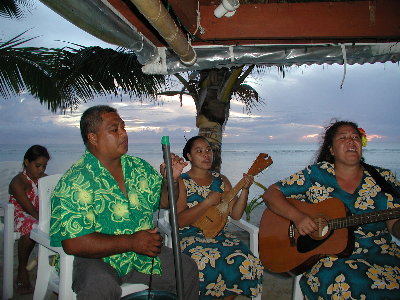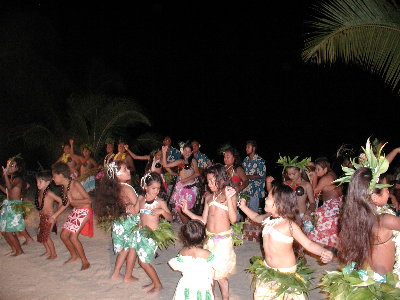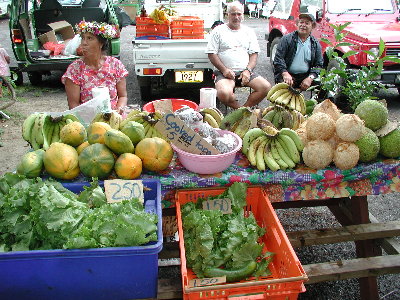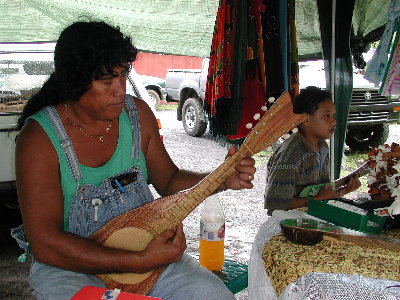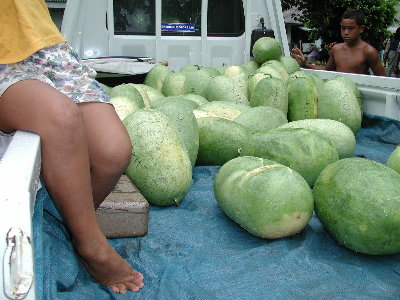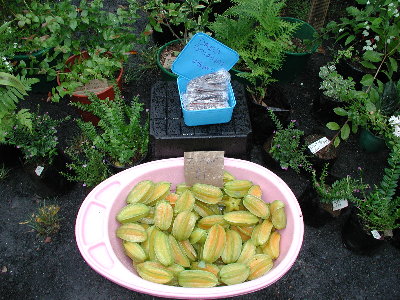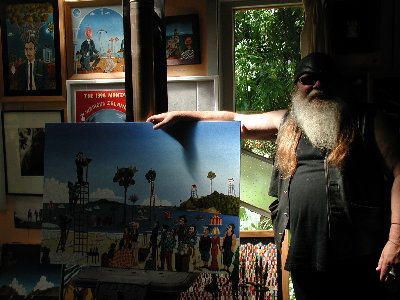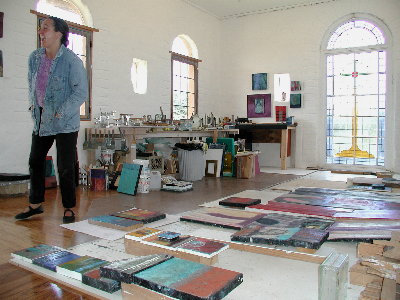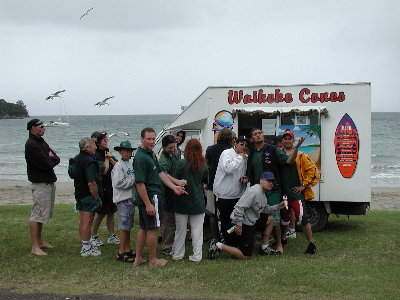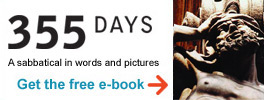Speech Impediments 3
2/22/01: Rarotonga, Cook Islands
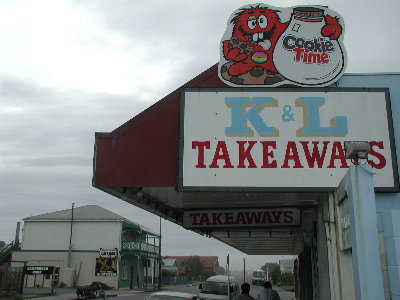
We’ve gotten used to saying “Excuse me?” now. Although English is spoken most anywhere, the permutations are endless. Humor is particularly hard to render, as I found one evening in Malaysia, when Miss Esther (a kind and omnipresent hotel employee) was advising me on what to wear before heading out for the evening.
I was in shorts, and sensing that she might think that inappropriate (never mind the oppressive heat and humidity), I asked her if she thought shorts were all right. “Well, if you’ll be in a restaurant, long pants might be better, Mr. Horsted.” Sorry I’d asked, I responded, “Well, okay, I’ll change. But I have found that even when I’m in shorts, people will still take my money.” Apparently, she understood that only literally. She looked shocked, then sadly demure, and then turned away. I put on pants—and attempted no more humor. Or humour, for that matter.
Here in the Cook Islands, the natives definitely run the place—but most can speak an English similar to their sister nation, New Zealand. There are still variations and, of course, and some Maori words for which there are no substitutes. So you even learn a few Maori words over time. Not to mention, they speak mostly Maori to each other. (When I asked a bartender to call me a cab, he grabbed a friend to translate, called me a cab, and then had the friend tell me, “Five minutes.”) We’ll spare you a Maori lesson. But here are a few more examples of English in action.
- Stuffed up (Finished, ruined)
- Talkback radio (Talk radio)
- Upmarket (Upscale)
- Anti-clockwise (Counter-clockwise)
- Pushbike (Bike)
- Motorbike (Motorcycle)
- Canoe (Kayak)
- Ginchies (Underwear)
- Mozzies (Mosquitoes)
- Maths (Math)
- Lolly (Candy)
- Return (Roundtrip)
- Migrants (Immigrants)
- “Hey?” (“Huh?”)
- Brolly (Umbrella)
- Hoover (Vacuum cleaner)
- Floor (Ground)
- Hardly (Hard)
- Bum (Butt)
- Hooligan (Bum)
- Takeaway (Takeout)


